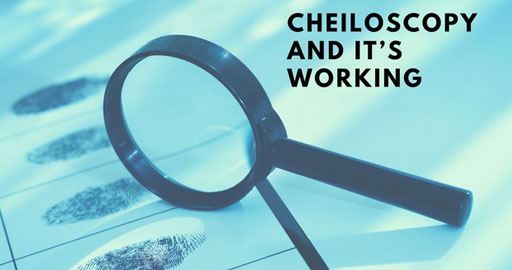
What Is Cheiloscopy and How Does It Work?
Cheiloscopy, is a forensic science discipline which focuses on the study and analysis of lip prints as a means of identifying individuals. Like fingerprints and DNA, lip prints offer a distinctive and potentially reliable method of identification. This article delves into the world of cheiloscopy, exploring what it is, how it works, its applications, and its significance in forensic investigations.
Understanding Cheiloscopy
Cheiloscopy, derived from the Greek words “cheilos” (lip) and “skopein” (to examine), is the scientific study of lip prints or patterns present on an individual’s lips. These lip prints are the unique and permanent grooves, wrinkles, and creases found on the vermilion border of the lips. Just as no two fingerprints are identical, lip prints are also unique to each person. This uniqueness forms the basis for their use in forensic identification.
How Cheiloscopy Works
Cheiloscopy relies on the observation and analysis of the distinct patterns on the lips. These patterns can be classified into several categories, including:
- Vertical Lines:These are the most common type of lip print and run vertically across the lips. They can be further classified into different subtypes, such as interrupted, branched, or intersected lines.
- Horizontal Lines: These are less common than vertical lines and typically run horizontally across the lips.
- Mixed Patterns: Mixed patterns are a combination of both vertical and horizontal lines, resulting in a more complex pattern.
- Criss-Cross Patterns:These lip prints exhibit diagonal or criss-crossing lines on the lips.
Analyzing lip prints involves capturing clear impressions of the lips, usually through the use of lipsticks or other lip cosmetics on a piece of paper or glass. These impressions are then examined under magnification or with the help of specialized equipment to identify and document the lip print patterns. The features of the lip print, such as the arrangement, shape, and direction of lines, are recorded and compared to reference prints.
Applications of Cheiloscopy
Cheiloscopy can be a valuable tool in forensic investigations, especially when other forms of identification like fingerprints or DNA are unavailable or inconclusive. Lip prints left on surfaces at crime scenes or on objects used in criminal activities can be compared to known samples to establish a suspect’s presence or involvement.
Lip print analysis can aid in criminal profiling by providing additional information about the perpetrator. For example, lip print patterns may suggest a person’s age, gender, or ethnicity, which can assist investigators in narrowing down potential suspects. In cases involving missing persons, lip print analysis can be used to help identify individuals when dental records or DNA samples are not available. This can provide closure to families and aid in the resolution of such cases.
Challenges and Limitations
While cheiloscopy offers several advantages, it also has its limitations and challenges:
- Environmental Factors: Lip prints can be affected by environmental factors such as dryness, humidity, and temperature. These conditions can alter the appearance of lip prints and make them less reliable for identification.
- Altering Factors: The use of lip cosmetics or lip surgery can modify the natural lip patterns, making identification more challenging.
- Limited Database: Unlike fingerprints and DNA, there is a limited database of lip prints available for comparison. This makes it less commonly used in practice and reduces its effectiveness.
- Subjectivity: Lip print analysis relies on the examiner’s expertise and can be subjective. Standardization and training are essential to ensure accuracy and reliability.
Conclusion
Cheiloscopy, the study of lip prints, offers a unique and potentially valuable tool for forensic identification and criminal investigations. While it may not be as widely recognized or utilized as fingerprints or DNA, it can provide crucial evidence in cases where other forms of identification are lacking or inconclusive.
With advancements in technology and increased awareness of its potential applications, cheiloscopy may play a more prominent role in the field of forensics and security in the future. However, it is essential to acknowledge its limitations and continue refining its techniques to ensure accuracy and reliability in practical use.
Leave a Reply
Leave a Reply
Explore More Similar Posts
Explore More Blogs


Leave a Reply